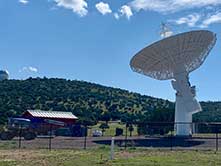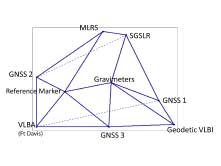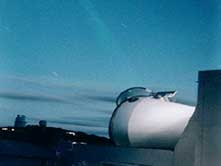MGO: For Science and Society
 The data and products from MGO will be used to support a range of scientific and societal applications in areas such as Earth science; positioning, navigation, and timing; radio science information systems, education, and public outreach.
The data and products from MGO will be used to support a range of scientific and societal applications in areas such as Earth science; positioning, navigation, and timing; radio science information systems, education, and public outreach.
MGO Instrumentation
 The scope of MGO – its instrumentation, measurement precision, and scientific analysis framework – is driven by the need to precisely monitor global and regional sea-level change and related areas.
The scope of MGO – its instrumentation, measurement precision, and scientific analysis framework – is driven by the need to precisely monitor global and regional sea-level change and related areas.
Current Research Projects at MGO
 Several research projects utilize and strengthen MGO. Ground-breaking research to improve its equipment and techniques help improve the accuracy of the mm-level metrology. Similarly, significant research is being undertaken to better understand the changes to the gravity load that may affect the MGO’s instrumentation.
Several research projects utilize and strengthen MGO. Ground-breaking research to improve its equipment and techniques help improve the accuracy of the mm-level metrology. Similarly, significant research is being undertaken to better understand the changes to the gravity load that may affect the MGO’s instrumentation.
UT and NASA: A Unique Relationship Built on a Half-Century Legacy
 MGO is the most recent incarnation of a storied scientific career dating back to 1969. The astronauts of Apollo XI – the first mission to successfully land humans on the Moon – left behind a retroreflector in the Moon’s Sea of Tranquility region. The McDonald Observatory’s 2.7-meter Lunar Laser Ranging (LLR) system was among five globally to report successful high-precision lunar laser range measurements continued doing so after the 1980’s. LLR continued at the Observatory using the Mobile Laser Ranging System (pictured) until April 2015.
MGO is the most recent incarnation of a storied scientific career dating back to 1969. The astronauts of Apollo XI – the first mission to successfully land humans on the Moon – left behind a retroreflector in the Moon’s Sea of Tranquility region. The McDonald Observatory’s 2.7-meter Lunar Laser Ranging (LLR) system was among five globally to report successful high-precision lunar laser range measurements continued doing so after the 1980’s. LLR continued at the Observatory using the Mobile Laser Ranging System (pictured) until April 2015.
